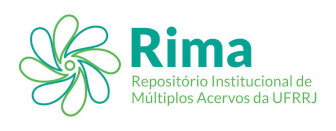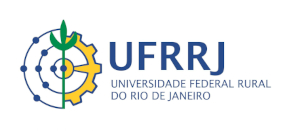Please use this identifier to cite or link to this item:
https://rima.ufrrj.br/jspui/handle/20.500.14407/22005| Tipo do documento: | Dissertação |
| Title: | As representações e identidades sociais do policial militar sobre a polícia militar do Estado do Rio de Janeiro. |
| Other Titles: | The military police representations and social identities about the military police of the state of Rio de Janeiro |
| Authors: | Nevôa, Jéssica Farias |
| Orientador(a): | Naiff, Denis Giovani Monteiro |
| Primeiro membro da banca: | Naiff, Denis Giovani Monteiro |
| Segundo membro da banca: | Gomes, Antonio Marcos Tosoli |
| Terceiro membro da banca: | Wolter, Rafael Moura Coelho Pecly |
| Keywords: | Representações sociais;Identidade Social;Polícia Militar;social Representations;Social Identity;Military police |
| Área(s) do CNPq: | Psicologia |
| Idioma: | por |
| Issue Date: | 2020 |
| Publisher: | Universidade Federal Rural do Rio de Janeiro |
| Sigla da instituição: | UFRRJ |
| Departamento: | Pró-Reitoria de Pesquisa e Pós-Graduação |
| Programa: | Programa de Pós-Graduação em Psicologia |
| Citation: | NEVÔA, Jéssica Farias. As representações e identidades sociais do policial militar sobre a polícia militar do Estado do Rio de Janeiro. 2020. 93 f. Dissertação (Mestrado em Psicologia) – Pró-Reitoria de Pesquisa e Pós-Graduação, Universidade Federal Rural do Rio de Janeiro, Seropédica, 2020. |
| Abstract: | As representações sociais são esquemas, sistemas formados por elementos e cognemas de significância, compostas de um núcleo central, através do qual emerge a identidade semântica da representação possuindo um valor organizador; e pelo sistema periférico, através do qual seus elementos são negociáveis com o contexto da realidade, permitindo a remodulação semântica da representação. Dessa forma, entende- se as representações sociais como uma estrutura de crenças formadas pelas relações intergrupais com valor comunicacional, são consensuais, ou seja, preconizam a partilha de elementos cognitivos conotando não só uma dimensão cognitiva, como também uma dimensão afetiva, intervindo e compondo a identidade social. Vale ressaltar que as representações sociais orientam a interpretação do mundo atravessando comportamentos, uma vez que são irrigadas de conteúdo cultural, sócio-histórico e político. Uma vez contemplada como estrutura de crenças que orienta condutas, a Teoria das Representações sociais permite o entendimento do policial militar como um sujeito, um agente ativo nos agenciamentos coletivos atravessados por elementos simbólicos sócio-históricos, o que possibilita entender que a representação social da instituição polícia militar foi e é permanentemente construída através das relações sociais de interpretação do mundo e de atribuição de valores, o que forma a identidade da instituição. A polícia militar é compreendida como com uma ferramenta, um instrumento ao qual é atribuído o direito de uso de força para manter a ordem pública, o que se configura um grande desafio para todo o corpo social, exigindo assíduos estudos científicos sobre a prática policial contemporânea. Dessa forma, a presente pesquisa objetiva identificar os elementos formadores e constituintes da representação social do policial militar sobre ele mesmo mediante sua atividade laboral. A pesquisa foi realizada com a amostra de 124 policiais militares da Polícia Militar do Estado do Rio de Janeiro distribuídos em batalhões, UPPs e CEFAP. Foi utilizado um instrumento de representações sociais e identidade social, no qual constavam quatro questões de evocação livre e três questões abertas. Os dados da tarefa de evocação livre foram analisados no programa Iramutq que proporcionou análise prototípica e de similitude. As questões abertas foram analisadas através da técnica de análise de conteúdo da Bardin. Os resultados apontam para a formação de um panorama sobre a PMERJ e seus vetores de atuação, assim como sobre os policiais, ramificado em dois eixos de significância que remontam lócus de complexidades práticas e conceituais no qual desembocam questões sociais, identificatórias, políticas e econômicas. |
| Abstract: | The social representations are outlines, systems formed by elements and significance cognitives, composed of a central nucleus, through which the semantic identity of the representation emerges possessing an organizing value; and for the outlying system, through which their elements are negotiable with the context of the reality, allowing the semantic remodel of the representation. In that way, understand the social representations as a structure of faiths formed by the relationships intergroup with value comunicacional, they are consensual, in other words, they extol the share of cognitive elements connoting not only a cognitive dimension, as well as an affectionate dimension, intervening and composing the social identity. It is worth to emphasize that the social representations guide the interpretation of the world crossing behaviors, once they are irrigated of content cultural, partner-historical and political. Once meditated as structure of faiths that guides conducts, the Theory of the social Representations allows the military policeman's understanding as a subject, an active agent in the collective assemblies crossed by partner-historical symbolic elements, the one that makes possible understand that the social representation of the institution military police was and it is built permanently through the social relationships of interpretation of the world and of attribution of values, what forms the identity of the institution. The military police is understood as with a tool, an instrument to which the right of use of force is attributed to maintain the public order, what is configured a great challenge for the whole social body, demanding assiduous scientific studies on the practice contemporary policeman. In that way, to present researches lens to identify the elements constituents and constituent of the military policeman's social representation on him same meantime work activity. The research was carried out with a sample of 124 military police officers from the Military Police of the State of Rio de Janeiro distributed in battalions, UPPs and CEFAP. An instrument of social representations and social identity was used, which contained four questions of free recall and three open questions. The data from the free recall task were analyzed using the Iramutq program, which provided a prototype and similarity analysis. Open questions were analyzed using Bardin's content analysis technique. The results point to the formation of a panorama about the PMERJ and its vectors of action, as well as about the policemen, branched out in two axes of significance that go back to the locus of practical and conceptual complexities in which social, identification, political and economic issues unfold. |
| URI: | https://rima.ufrrj.br/jspui/handle/20.500.14407/22005 |
| Appears in Collections: | Mestrado em Psicologia |
Se for cadastrado no RIMA, poderá receber informações por email.
Se ainda não tem uma conta, cadastre-se aqui!
Files in This Item:
| File | Description | Size | Format | |
|---|---|---|---|---|
| 2020 - Jéssica Farias Nevôa.pdf | 1.39 MB | Adobe PDF |  View/Open |
Items in DSpace are protected by copyright, with all rights reserved, unless otherwise indicated.

